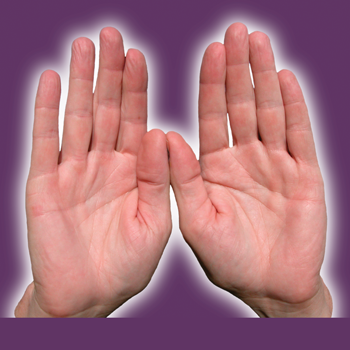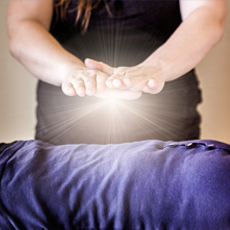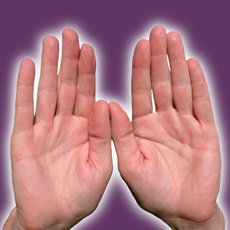by Jo Brennan
For the migraine sufferer, life is constantly on hold. You never know when a migraine will strike, how fast it will hit you or how severe the symptoms will be. The headache can last from four hours to three days and the telltale signs of nausea, sensitivity to light and sound or changes in vision or hearing alone can be enough to disrupt your life before the pain even starts.
The goal of any migraine treatment is complete relief of pain and symptoms so that the client can return to normal functioning. As a massage therapist and Reiki practitioner, many migraine clients have come into my therapy room. Prior to practicing Reiki, my clients experienced no relief from traditional massage practices. When I say no relief, I mean it. I had a zero percent success rate in having the client leave my office with any sort of symptom reduction. I confess that I was doing a few things that contributed to this result. I was playing music, massaging muscles, moving their head around and I had a fountain on. This experience taught me a great deal about things to do and things not to do when working with a migraine client. After changing the treatment plan to a Reiki treatment and following a strict process that minimizes external stimulation during the treatment, my success rate of symptom relief changed to one hundred percent. Now, every client reports results of some relief from a pain reduction of at least five points on a 0– 10 scale to elimination of one or more of the accompanying symptoms all the way to complete relief and disappearance of the headache.
The process for a Reiki session for migraines is very easy and requires no advanced levels of training. In fact a chronic migraine sufferer can learn Reiki in a Reiki Level I class and reduce the symptoms long before the flare-up of the headache in many cases. My process consists of three parts modified for migraines: 1) the intake, 2) the treatment room preparation and 3) the treatment itself.
The intake process is much the same as anywhere: you ask the questions relating to what they would like special attention paid to today. I always ask (in a whisper or soft voice) if they know what their migraine triggers are. This will give you insight as to how close they are to finding out what the root cause or triggers are. If they are still challenged by this process then suggest keeping a headache journal and sharing it with their doctor and with you. Journal templates can be found easily online. I like this on: http://www.webmd.com/migraines-headaches/guide/headache-diary
Then I ask about what they are currently experiencing:
- Current pain on a scale of 0– 10?
- Are they in the pre-pain stage?
- What symptoms are present right now?
- Do they just know that it is coming because it is related to a known trigger such as monthly cycle or stress?
- Are they currently light sensitive, movement sensitive or sound sensitive or all of the above?
Then I ask what their normal or past treatments have been:
- oral medication
- injections
- chiropractic
- massage
- rest in a quiet dark place.
I then ask about the normal duration of their headaches and how long they have been suffering from migraines.
All this information helps both you and the client determine if Reiki is a successful treatment for them. You need to keep in mind that even in the pre-pain stage, many of the symptoms are affecting thought patterns, and after the session they may not remember that they were at a pain level eight beforehand. Finally, I ask if they have had Reiki before. If not, I give a brief explanation, making sure to include that I will not be putting any pressure on their head or moving them during the treatment. I also emphasize that if at any time they feel uncomfortable to let me know so that whatever is affecting them can be changed.
My treatment room is a beautiful place for Reiki. I am in a renovated former church and my room is on the top floor, which used to be the ceiling of the church. I have one of the original stained glass windows with the arch at the top as well as the ornate pillars and original light fixture right above the table. The energy in the entire building is spectacular. My table is also outfitted for maximum client comfort at all times. Three inches of temperature sensitive foam on top of the already soft massage table, a fleece heating pad, then only the thickest flannel sheets, followed by a soft fuzzy blanket. Even the pillow for under the knees is temperature sensitive foam instead of a bolster. When you get on the table you sink into pure comfort. The changes that I make when working with a migraine client compared to any other Reiki session are all also for the client’s comfort. I turn off the music and fountains and leave it silent. When there are other noises in the building, I turn on a white or pink noise machine to minimize the amount of distant voices or sounds that the client might hear. Next, I turn off all lights except three salt-rock lamps to make the room as dark as possible. I make sure everything that can ring or chime is off. Then I make sure there are no scented candles or aromatherapy oils around. Scents often trigger symptoms in a migraine sufferer. I know you love the soft music and smell of lavender so in a half hour, after your client leaves, you can turn the music back on and pull out the essential oils, but for now tuck them away and wash your hands with unscented soap.
The session itself is calming and peaceful and very simple. I like to keep the session to a 30 minute time frame because this seems to bring the client into the session in a relaxed state. When you tell people that they will be on the table for an hour, and they are not feeling their best, the anxiety level tends to increase. When they lay down I suggest letting me cover the eyes with an unscented eye pillow to block out light and put a rolled up towel under the neck if desired just for the feeling of stability. I set my intention to give relief that is needed in the moment and healing in the highest and greatest good of the client. I begin with the hand position directly over or slightly behind the ears while at the same time using Gyoshi Ho and sending Reiki with the eyes directly into the third eye of the client. I hold each position for five to seven minutes, the transitions are made as smoothly and subtlety as possible between positions and during the time of each position I try not to move or shift at all. My suggestion is to make sure my client is very comfortable also because shifting can make a chair or stool squeak. Unless I am guided to change for a particular client, the second hand position is over the crown with Gyoshi Ho still on the third eye. Then I will place my hands over the third eye and eye pillow, leaving just enough space to continue the Gyoshi Ho between the thumbs. The last position will be at the throat chakra with the hands pointing directly inward to the throat or hands facing slightly upward toward the upper cervical vertebrae— as before I also continue with Gyoshi Ho. The key is stillness but you need to be cautious that you do not fall into a deep meditation since you have turned off all things that ring and chime that might bring you back in a timely manner if you drift. As far as symbols, I use the Mental/emotional symbol and Power symbol in the Gyoshi Ho and vary the symbols in the hands based on guidance. When all the hand positions are complete, I do a Byosen Scan and Reiji-ho then ask my guides if this session is complete.
When the session is complete, I will ask “How are you doing” using the client’s first name, and letting her know I will be removing the eye covering at that point. You do not want to shock someone this relaxed by letting in the light without warning. I then let the client know I will leave the room, that she can take her time and that I will meet her with some water in the waiting area. This gives the client any time to re-orient and take all the time needed to get back up. If this is the first Reiki session for a migraine for this person, you need to remember that deep inside the expectation is little or no relief, and that she will be getting up very slowly and assess how she is feeling at each movement for herself. If you are in the room, the tendency is to rush this process and get off the table quickly, which is never good, even if you do not have a headache. I leave the room, thank my guides, clear my energy and get my client some water.
When the client opens the door, I first see how effective the session was. There is a new brightness in the eyes and relaxation of the facial muscles, a telltale sign that the client is feeling better. I always ask a client to let me know the pain scale she is currently at, then reminding the client of the number given before the session. This is where I have heard statements such as “My headache is gone; I will not need to give myself my shot.” or “I have never gotten this kind of relief from anything else.” When you hear these statements it warms your heart that you were able to be a part of this experience for someone. Although it is far from a scientific or double-blind study, I know that all of my clients have experienced some level of relief. This directly correlates with them spreading the word that if you have a headache, I am the one to see and Reiki is the thing to ask for. From a marketing standpoint I do not need to sell this service as I get calls every week from clients who have heard by word of mouth that I am the headache relief person. The other advantage is that my migraine clients will often come for a general Reiki session since there seems to be more time between headaches. I even have one client that has not had a repeat episode since the first session. I do let my clients know that taking a Reiki Level I class will give them the tools to do a self-treatment when symptoms return. Most of my clients decline, stating that my table is too comfortable to pass up, but take a class schedule just in case.
Just because someone has a migraine, does not mean that life needs to be on hold. A simple half hour Reiki session may be just what is needed. As a Reiki practitioner, you can help those with migraines more than you may have realized would be possible by relieving some symptoms and giving them the gift of being able to continue to live life to its fullest.
This article appeared in the Summer 2012 issue of Reiki News Magazine.







